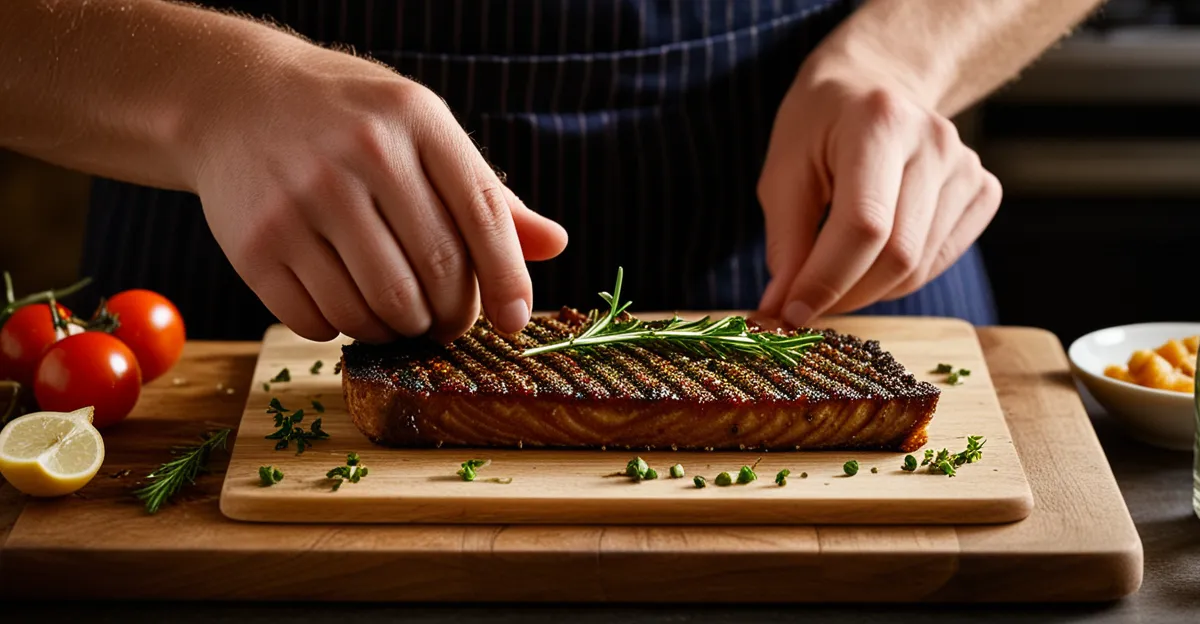Core Components of Classic British Cooking
Authentic British cuisine is grounded in a selection of staple British ingredients that have shaped the nation’s traditional dishes for centuries. British food basics revolve around humble, locally sourced items that reflect regional diversity and seasonal availability. These ingredients include root vegetables, quality meats, dairy products, and simple yet robust seasonings.
Regional and seasonal produce play a vital role in authentic British cuisine. For example, in spring and summer, fresh vegetables like peas and new potatoes become key, while autumn favors hearty root vegetables such as parsnips and swede. This cyclical use of seasonal ingredients ensures that British cooking remains sustainable and deeply connected to the land.
Also read : What Are the Most Popular British Cooking Techniques Today?
Culturally, these core ingredients carry historical significance. Suet, butter, and cheeses are not just additives but embody centuries of rural life and culinary tradition. The reliance on British wheat and oats similarly ties recipes to local farming practices. Understanding these British food basics enriches one’s appreciation for the rich tapestry of the nation’s culinary identity.
Notable Proteins in British Cuisine
When considering British meats, beef, lamb, and pork stand at the forefront of iconic traditional British dishes. Beef is the basis of classics like roast beef and Yorkshire pudding, while lamb appears frequently in hearty stews and Sunday roasts. Pork is versatile, from sausages to pork pies, reflecting a rich lineage in British food. These meats embody the staple British ingredients essential to authentic British cuisine.
This might interest you : How Can British Cuisine Inspire Modern Food Trends?
Fish also holds a celebrated place in British cooking. Cod and haddock are central to the ever-popular fish and chips, a dish synonymous with British culture. Salmon, often smoked or poached, features prominently in coastal regions and festive meals. Collectively, these types of fish contribute distinct flavors that support the nation’s culinary identity.
Game meats, such as venison and pheasant, illustrate regional diversity and historical hunting traditions. Though less common on everyday tables, they remain significant in some local cuisines.
Understanding these British meats and fish in British cooking helps appreciate how protein choices shape classic recipes. These ingredients connect modern cooks to centuries of tradition and highlight the practical, hearty nature of British meals.
Signature Vegetables and Grains
The foundation of authentic British cuisine relies heavily on its signature vegetables and traditional grains. British root vegetables like carrots, swede (rutabaga), parsnips, and turnips have long been staples in hearty meals. These robust vegetables lend natural sweetness and earthiness to stews, roasts, and soups, especially during colder months. Their availability according to the seasons also ensures freshness and sustainability in British cooking.
British potatoes hold a special place in the nation’s food culture. Introduced centuries ago, potatoes are essential in many classic dishes such as mashed potatoes, roast potatoes, and the ever-popular shepherd’s pie. This versatility and omnipresence underline potatoes as a fundamental element of British food basics.
Grains like wheat, oats, and barley are equally vital. Wheat flour serves as the backbone for breads, pastries, and puddings, while oats appear in traditional dishes like oatcakes. Barley contributes both to food and beverages, reinforcing its importance in British culinary history. These traditional British grains complete the wholesome, filling nature of classic meals.
Together, these vegetables and grains define the substance of authentic British cuisine, shaping textures and flavors familiar in treasured recipes. Their enduring presence highlights a deep connection between British food, agriculture, and culture.
Unique Fats and Dairy Products
Authentic British cuisine relies heavily on traditional fats and British dairy products that add richness and distinct textures to dishes. Suet is a classic fat in British cooking, made from beef or mutton fat. It’s indispensable in recipes such as suet puddings, mincemeat pies, and dumplings, lending a moist, dense texture and a subtle savoury flavour that’s hard to replicate with other fats.
Butter is another cornerstone of British food basics, prized for its creamy taste and versatility. It enriches baked goods, sauces, and vegetables alike. Clotted cream, with its thick, velvety consistency, is quintessential for teatime treats like scones. Meanwhile, British cheeses—Cheddar, Stilton, and Red Leicester—highlight the country’s dairy heritage, providing bold or mellow flavours to meals and snacks.
These staple British ingredients not only influence texture and taste but also reflect centuries of agricultural practices and regional dairying traditions. Using these traditional fats and dairy items preserves the authenticity of British recipes and deepens appreciation for the cuisine’s cultural roots. They remain pivotal for recreating classic dishes with the integrity that defines genuine British cooking.
Seasonings, Herbs, and Traditional Flavours
Classic British herbs and spices form the subtle backbone of authentic British cuisine, providing nuanced layers rather than overpowering tastes. Key herbs such as thyme, parsley, mint, and bay leaves are staples that gently uplift dishes like stews, roasts, and soups. For example, thyme adds earthy notes to hearty meats while mint is essential to traditional lamb-based recipes. These herbs have been used across generations, reinforcing their place in staple British ingredients.
Traditional seasonings in the UK emphasize balance and restraint. Basic seasoning with salt and pepper remains fundamental, while the occasional inclusion of nutmeg or mace lends warmth without overwhelming traditional flavors. British cooks value spices minimally, focusing on enhancing rather than masking core tastes.
Unique British sauces and condiments also define classic British flavours. Mustard, Worcestershire sauce, and malt vinegar lend characteristic acidity and depth. Malt vinegar, for instance, is quintessential for fish and chips, showcasing how traditional seasonings UK complement iconic recipes.
Together, these herbs, spices, and condiments form an indispensable part of authentic British cuisine, enhancing the natural flavours of the staple British ingredients that form the foundation of classic meals.
Baking and Sweet Essentials
In authentic British cuisine, baking forms an essential part of the culinary tradition, relying heavily on specific types of British flour and sweeteners. Plain flour and self-raising flour are the most common, with self-raising containing added leavening agents that produce lighter cakes and breads. This distinction is crucial for mastering traditional British baked goods like Victoria sponge and scones, which showcase the importance of texture and rise in recipes.
Sugar varieties such as caster sugar are prized for their fine grain, ideal for delicate cakes and desserts. Golden syrup, a signature British sweetener made from cane sugar, lends a rich, caramel-like flavour to classics such as treacle tart and flapjacks. Dried fruits—currants, sultanas, and raisins—are staples in items like fruitcakes and Christmas pudding, providing depth and sweetness.
Traditional preserves and marmalade complete the baking repertoire, with marmalade’s characteristic tanginess pairing beautifully with buttery toast or fresh scones. These sweet essentials are more than ingredients; they represent festive occasions and everyday teatime customs, cementing their status as staple British ingredients. Understanding these baking basics is key to experiencing the full flavour and cultural resonance of British cooking.
Core Components of Classic British Cooking
Authentic British cuisine is grounded in staple British ingredients that provide the foundation for traditional meals. Central to these are simple, locally sourced items such as root vegetables, quality meats, and dairy products. Regional and seasonal produce shapes the character of each dish; for example, fresh peas and new potatoes mark spring and summer menus, while parsnips and swede feature prominently in autumnal fare. This seasonal approach ensures freshness and sustainability in classic recipes.
British food basics carry deep cultural and historical significance. Ingredients like suet and butter reflect centuries-old rural practices and culinary heritage. For instance, suet’s use in puddings and pies is more than tradition—it preserves texture and flavour unique to British cooking. Similarly, reliance on British wheat and oats connects recipes to local farming legacies.
Together, these core components define authentic British cuisine. Understanding their role enhances appreciation of how simple ingredients, influenced by geography and seasonality, create the enduring tastes and textures iconic to British food basics.
Core Components of Classic British Cooking
Understanding authentic British cuisine means recognizing its foundation in staple British ingredients that emphasize simplicity and locality. These core ingredients include well-selected meats, fresh seasonal vegetables, and traditional dairy staples, which together create dishes prized for their hearty, comforting nature.
Seasonal and regional produce deeply influence British food basics. For example, spring menus highlight fresh peas and broad beans, while autumn embraces root vegetables like parsnips and swede for warmth and earthiness. This respect for seasonality not only enhances flavour but also supports sustainable practices integral to British culinary heritage.
The cultural weight of these ingredients is significant. Suet, butter, and British cheeses represent more than just nutrition—they embody centuries of farming traditions and rural life. Using these elements preserves authentic textures and tastes unique to British cooking. Wheat and oats reflect the UK’s agricultural history, grounding recipes in local terroir.
Together, these staple British ingredients form the pillars of traditional British meals. Their regional and seasonal roots enrich the cuisine’s story, ensuring that every dish connects to the land and its people.








